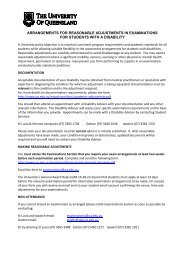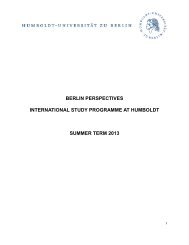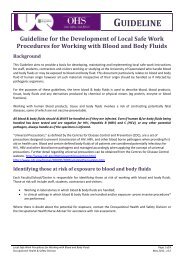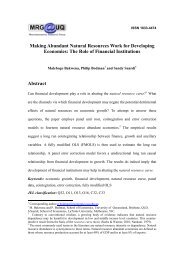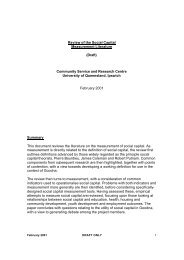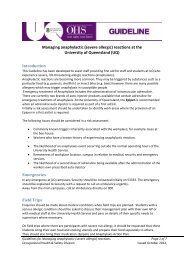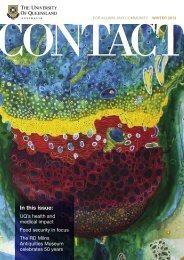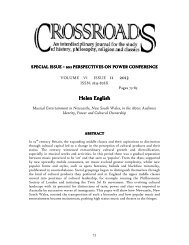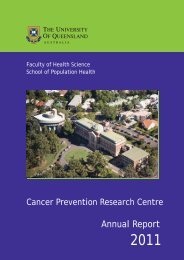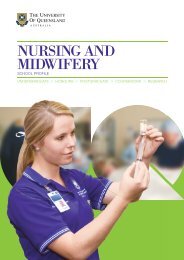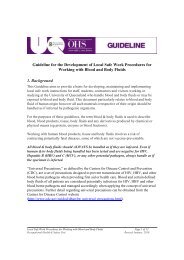Managing Traffic Incidents - University of Queensland
Managing Traffic Incidents - University of Queensland
Managing Traffic Incidents - University of Queensland
You also want an ePaper? Increase the reach of your titles
YUMPU automatically turns print PDFs into web optimized ePapers that Google loves.
(Continued from page 25)<br />
Thomas, K and Dia, H (2000a) A Neural Network<br />
Model for Arterial Incident Detection Using Probe<br />
Vehicle and Loop Detector Data, Proceedings <strong>of</strong><br />
the 22nd Conference <strong>of</strong> Australian Institutes <strong>of</strong><br />
Transport Research (CAITR 2000), 6-8 December<br />
2000, Australian National <strong>University</strong>, Canberra<br />
Australia.<br />
This paper describes a research project which<br />
aims to demonstrate the feasibility <strong>of</strong> using<br />
real-time traffic measurements to develop an<br />
automated arterial incident detection model<br />
using a neural network. The travel time data<br />
needed for model development will be collected<br />
from probe vehicles (public transportation<br />
buses) that transmit travel time data as<br />
they traverse various links <strong>of</strong> the road network;<br />
and from fixed electronic detection<br />
devices (inductive loop detectors) embedded<br />
in the pavement <strong>of</strong> the road.<br />
The models proposed in this research will<br />
use the probe vehicle and fixed detector data<br />
to automatically detect any incidents (e.g.<br />
accidents, disabled vehicles, spilled loads etc.)<br />
that reduce the capacity <strong>of</strong> the road and result<br />
in queues, delays and increased travel times<br />
for travellers. Early detection <strong>of</strong> such incidents<br />
can help traffic authorities respond<br />
quickly, dispatch emergency services to the<br />
incident site and divert traffic in order to<br />
reduce delays. Unlike previous studies which<br />
relied on simulated probe vehicle and loop<br />
detector data, this project will be based on<br />
real-world data to be collected from Gympie<br />
Road in Brisbane. The models proposed in<br />
this research project will provide road authorities<br />
with quick and reliable incident detection<br />
aimed at reducing congestion, improving air<br />
quality and enhancing the performance <strong>of</strong> the<br />
road network.<br />
Non-recurrent congestion resulting from<br />
accidents, breakdowns and other incidents<br />
accounts for about 60% <strong>of</strong> the delays on<br />
freeways. Therefore, the sooner an appropriate<br />
incident response is implemented, the less<br />
impact the incident will have on road user<br />
safety, congestion and the environment.<br />
Various models have been developed for<br />
AID from a variety <strong>of</strong> theoretical backgrounds<br />
and data sources. However, most <strong>of</strong> these<br />
models have limitations, namely high false<br />
alarm rates or difficulties with portability and<br />
configuration. Artificial neural networks have<br />
had the most success, with low false alarm<br />
rates and relatively easy configuration.<br />
The use <strong>of</strong> fractal dimension analysis is<br />
becoming widespread. Experts in fields as<br />
diverse as Medicine, Physics, Seismology,<br />
Economics, Meteorology and Ecology are<br />
using fractal dimension analysis to quantify<br />
various phenomena. Fractal analysis has been<br />
used to model traffic flow, but does not<br />
appear to have been used for incident detection.<br />
Two fractal models were developed and<br />
tested on a data set <strong>of</strong> 100 incidents which<br />
were collected by VicRoads for the development<br />
<strong>of</strong> artificial neural network incident<br />
detection models. A similar methodology to<br />
that presented by Dia and Rose was used in<br />
this project so that the results <strong>of</strong> the fractal<br />
models could be compared with those <strong>of</strong> the<br />
ARRB/VicRoads and the Artificial Neural<br />
Network Models. !<br />
Copies <strong>of</strong> papers can be downloaded from<br />
http://www.uq.edu.au/dia/publications.html<br />
26 DECEMBER 2001<br />
Thomas, K and Dia, H (2000b) Incident Detection<br />
by Fractal Dimension Analysis <strong>of</strong> Loop Detector<br />
Data, Proceedings <strong>of</strong> the 22nd Conference <strong>of</strong><br />
Australian Institutes <strong>of</strong> Transport Research (CAITR<br />
2000), 6-8 December 2000, Australian National<br />
<strong>University</strong>, Canberra Australia.<br />
This paper describes a research project<br />
which aimed to demonstrate the feasibility <strong>of</strong><br />
using Fractal Dimension analysis <strong>of</strong> speed,<br />
occupancy and flow data for automatic<br />
incident detection (AID).


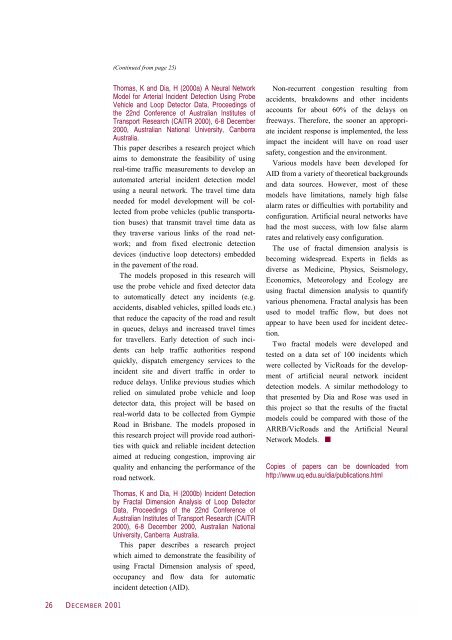

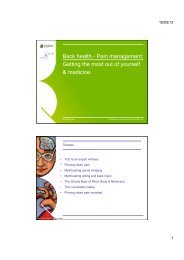
![Recycling [ PDF, 62KB ] - University of Queensland](https://img.yumpu.com/51805185/1/184x260/recycling-pdf-62kb-university-of-queensland.jpg?quality=85)
